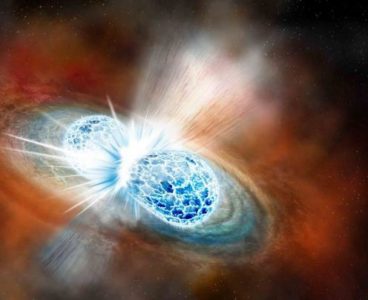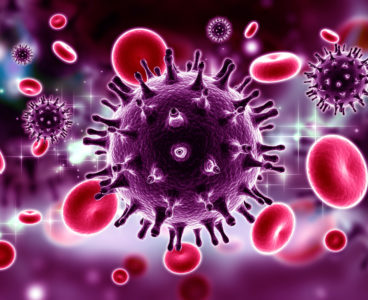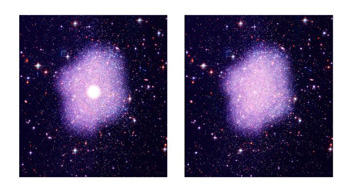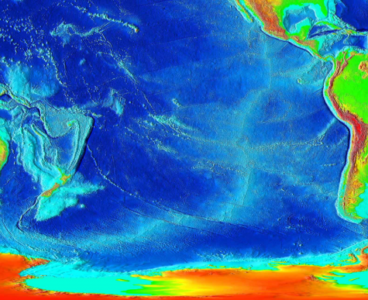A new technique by researchers at Princeton University, University of Chicago and IBM significantly improves the reliability of quantum computers by harnessing data about the noisiness of operations on real hardware. In a paper presented this week, researchers describe a novel compilation method that boosts the ability of resource-constrained and “noisy” quantum computers to produce…
Research Provides Speed Boost to Quantum Computers
A new finding by researchers at the University of Chicago promises to improve the speed and reliability of current and next generation quantum computers by as much as 10 times. By combining principles from physics and computer science, the researchers developed a new scalable compiler that makes software aware of the underlying quantum hardware, offering…
Rivers Raged on Mars Late into its History
Long ago on Mars, water carved deep riverbeds into the planet’s surface—but we still don’t know what kind of weather fed them. Scientists aren’t sure, because their understanding of the Martian climate billions of years ago remains incomplete. A new study by University of Chicago scientists catalogued these rivers to conclude that significant river runoff…
Breakthrough Could Enable Cheaper Infrared Cameras
There’s an entire world our eyes miss, hidden in the ranges of light wavelengths that human eyes can’t see. But infrared cameras can pick up the secret light emitted as plants photosynthesize, as cool stars burn and batteries get hot. They can see through smoke and fog and plastic. But infrared cameras are much more…
New Way to Split Tough Carbon Bonds Could Open Doors For Greener Chemicals
A breakthrough by chemists at the University of Chicago may one day open possibilities for making chemicals from plants rather than oil, by creating a new method to crack certain tough carbon-to-carbon bonds. A great number of chemicals in the natural and industrial world have backbones made of carbon-on-carbon bonds. These are regularly carved up…
In 5 to 10 Years, Gravitational Waves Could Accurately Measure Universe’s Expansion
Twenty years ago, scientists were shocked to realize that our universe is not only expanding, but that it’s expanding fasterover time. Pinning down the exact rate of expansion, called the Hubble constant after famed astronomer and UChicago alumnus Edwin Hubble, has been surprisingly difficult. Since then scientists have used two methods to calculate the value,…
New Theory Finds ‘Traffic Jams’ in Jet Stream Cause Abnormal Weather Patterns
The sky sometimes has its limits, according to new research from two University of Chicago atmospheric scientists. A study published May 24 in Science offers an explanation for a mysterious and sometimes deadly weather pattern in which the jet stream, the global air currents that circle the Earth, stalls out over a region. Much like…
Researchers Sew Atomic Lattices Seamlessly Together
Joining different kinds of materials can lead to all kinds of breakthroughs. It’s an essential skill that allowed humans to make everything from skyscrapers (by reinforcing concrete with steel) to solar cells (by layering materials to herd along electrons). In electronics, joining different materials produces “heterojunctions”—the most fundamental components in solar cells, LEDs or computer…
First Look at Jupiter’s Poles Show Strange Geometric Arrays of Storms
Jupiter’s got no sway. The biggest planet in the solar system has no tilt as it moves, so its poles have never been visible from Earth. But in the past two years, with NASA’s Juno spacecraft, scientists have gotten a good look at the top and bottom of the planet for the first time. What…
UChicago Scientists to Lead $10 million NSF ‘Expedition’ for Practical Quantum Computing
University of Chicago computer scientists will lead a $10 million “expedition” into the burgeoning field of quantum computing, bringing applications of the nascent technology for computer science, physics, chemistry and other fields at least a decade closer to practical use. Quantum computers harness the unique properties of quantum physics in machines that scientists hope will…
Scientists Craft World’s Tiniest Interlinking Chains
For decades, scientists have been trying to make a true molecular chain: a repeated set of tiny rings interlocked together. In a study in Science published online Nov. 30, University of Chicago researchers announced the first confirmed method to craft such a molecular chain. Many molecules described as “linked” are joined with fixed covalent bonds–not two freely…
Scientists Find Missing Clue to How HIV Hacks Cells to Propagate Itself
Tiny Nanopackages Built Out of DNA Help Scientists Peek at How Neurons Work
A team of scientists from the University of Chicago designed a way to use microscopic capsules made out of DNA to deliver a payload of tiny molecules directly into a cell. The technique, detailed Aug. 21 in Nature Nanotechnology, gives scientists an opportunity to understand certain interactions among cells that have previously been hard to track. “It’s…
World’s Most Sensitive Dark Matter Detector Releases First Results
New Method Uses Heat Flow to Levitate a Variety of Objects
Although scientists have been able to levitate specific types of material, a pair of UChicago undergraduate physics students helped take the science to a new level. Third-year Frankie Fung and fourth-year Mykhaylo Usatyuk led a team of UChicago researchers who demonstrated how to levitate a variety of objects—ceramic and polyethylene spheres, glass bubbles, ice particles,…
Heat From Earth’s Core Could Be Underlying Force in Plate Tectonics
For decades, scientists have theorized that the movement of Earth’s tectonic plates is driven largely by negative buoyancy created as they cool. New research, however, shows plate dynamics are driven significantly by the additional force of heat drawn from the Earth’s core. The new findings also challenge the theory that underwater mountain ranges known as…
New Analysis Explores Geographical Origins of the Flu
A computer model developed by scientists at the University of Chicago shows that small increases in transmission rates of the seasonal influenza A virus (H3N2) can lead to rapid evolution of new strains that spread globally through human populations. The results of this analysis, published September 13, 2016 in theProceedings of the Royal Society B,…
Simulations Foresee Hordes of Colliding Black Holes in LIGO’s Future
New calculations predict that the Laser Interferometer Gravitational wave Observatory (LIGO) will detect approximately 1,000 mergers of massive black holes annually once it achieves full sensitivity early next decade. The prediction, published online June 22 in the journal Nature, is based on computer simulations of more than a billion evolving binary stars. The simulations are based…














